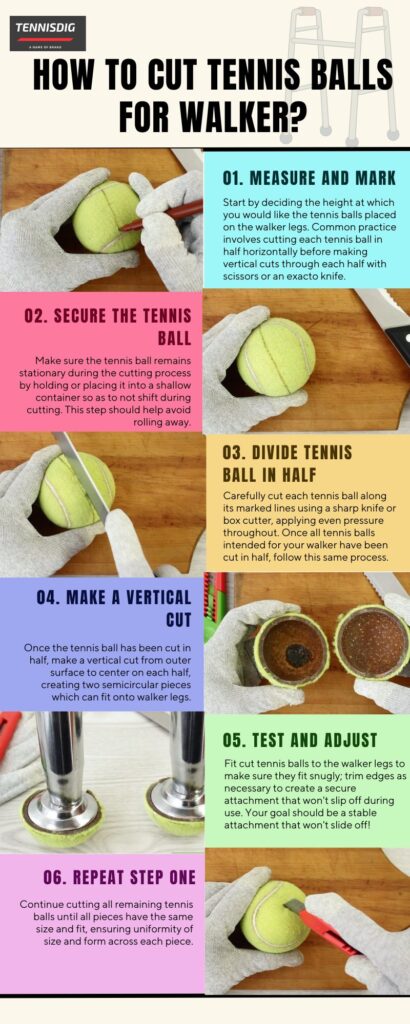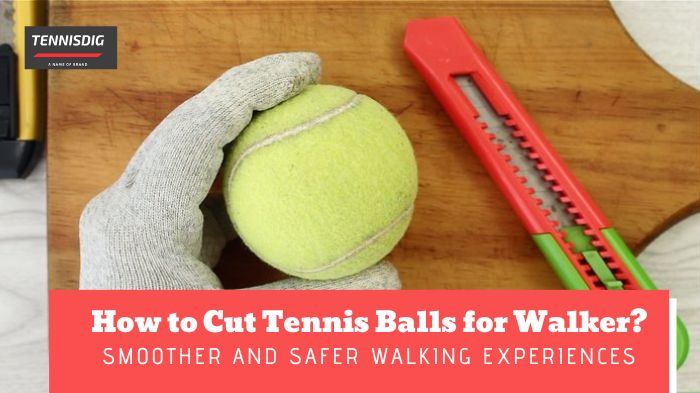Tennis balls with their vibrant color and unique texture have unexpectedly found another use as walker accessories. By cutting and fitting tennis balls onto the legs of walkers, individuals can enhance stability, reduce noise pollution, and prevent floor scuffs. In this comprehensive guide, we’ll explore creative and practical methods of cutting tennis balls for use as walker accessories – making this simple modification an indispensable aid for smoother and safer walking experiences.
Why choose tennis balls for Walkers?
At first glance, using tennis balls on walker legs might seem odd or bizarre, but its application is grounded in practicality. Tennis balls serve as cushioned cushions to absorb impact and lessen risk of scratches on indoor surfaces while their gripping texture provides increased traction for increased stability and reduced chance of slips. Furthermore, their use significantly decreases noise output by the walker, making this option both considerate and discreet for its users and those around them.

Selecting Appropriate Tennis Balls:
Before diving into the cutting process, it’s crucial to select suitable tennis balls for your walker. Standard balls (2.7″ diameter or 6.86 cm in diameter) typically fit most walker legs snugly.
Tools You Will Need for Ball Walkers:
Whilst tennis balls should be in good condition, sharp knives or box cutters provide clean cuts with accurate measurements. Utilising a marker pen allows users to mark out cutting lines.
Ruler or Measuring Tape: Designed to measure and mark equal cutting lines.
Step-by-Step Guide

1- Measure and Mark:
Start by deciding the height at which you would like the tennis balls placed on the walker legs. Common practice involves cutting each tennis ball in half horizontally before making vertical cuts through each half with scissors or an exacto knife before marking with marker or pen the desired height on each tennis ball using ruler or measuring tape.
2- Secure the Tennis Ball:
Make sure the tennis ball remains stationary during the cutting process by holding or placing it into a shallow container so as to not shift during cutting. This step should help avoid rolling away.
3- Divide Tennis Ball in Half:
Carefully cut each tennis ball along its marked lines using a sharp knife or box cutter, applying even pressure throughout. Once all tennis balls intended for your walker have been cut in half, follow this same process.
4- Make a Vertical Cut:
Once the tennis ball has been cut in half, make a vertical cut from outer surface to center on each half, creating two semicircular pieces which can fit onto walker legs.
5- Test and Adjust:
Fit cut tennis balls to the walker legs to make sure they fit snugly; trim edges as necessary to create a secure attachment that won’t slip off during use. Your goal should be a stable attachment that won’t slide off!
6- Repeat Step One:
Continue cutting all remaining tennis balls until all pieces have the same size and fit, ensuring uniformity of size and form across each piece.
Advantages of Utilizing Tennis Balls on Walkers
Enhance Stability: Tennis balls’ added traction and cushioning help individuals navigate various terrains more easily.
Reduced Noise: Tennis ball material softens impact noise generated by walkers for a quieter and more discreet walking experience.
Floor Protection: Tennis balls provide effective floor and carpet protection by avoiding scratches and scuffs on interior surfaces, helping preserve their integrity.
Cost-Effective Solution: Repurposing tennis balls as walkers is an economical alternative to purchasing expensive accessories for walkers, making this method of recycling suitable for many.
Conclusion
Converting tennis balls into walker accessories is an innovative yet simple solution that has quickly gained widespread attention for its practical benefits. By following a few straightforward steps, individuals can easily enhance the functionality of their walkers by increasing stability, decreasing noise emissions and protecting floor surfaces – as well as showing their resourcefulness! So take up those tennis balls and turn your walker into a safer, quieter and user-friendly mobility aid!

